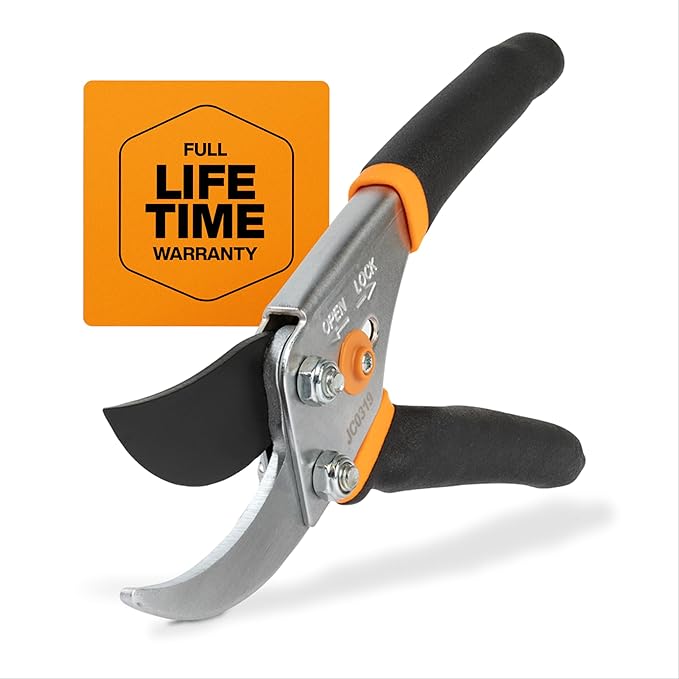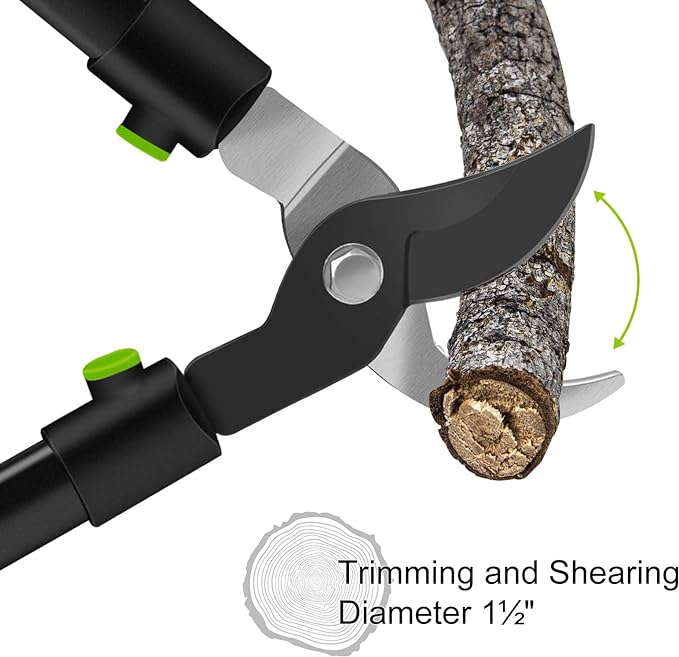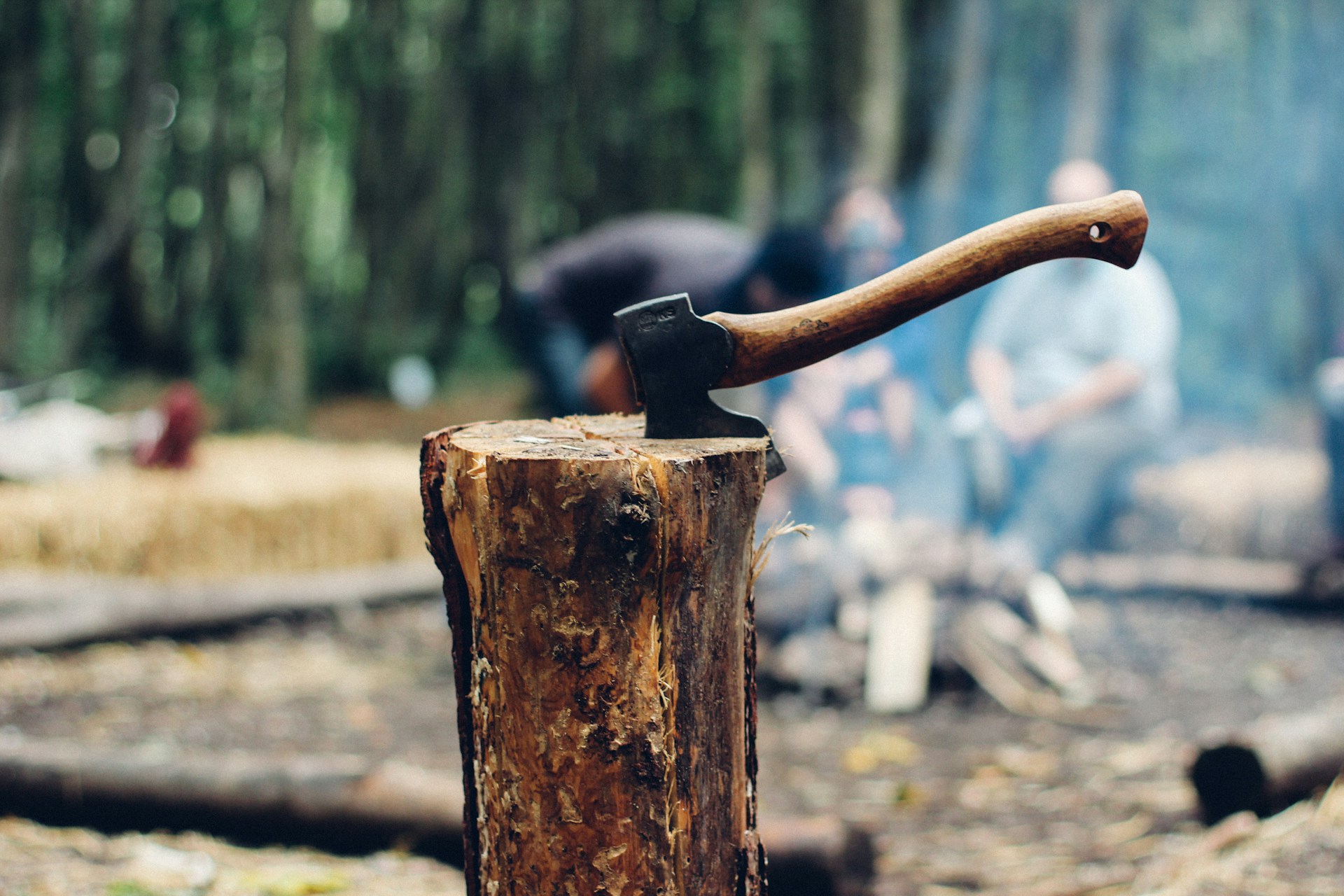Welcome to our comprehensive guide on efficient tree cutting tools and essential gardening tips for pruning and maintenance. Whether you are a seasoned gardener or a beginner, proper tree pruning and maintenance are crucial for the health and beauty of your garden. In this article, we will discuss the importance of using efficient tree cutting tools and provide expert tips to help you achieve optimum results. From selecting the right tools to understanding pruning techniques, we have got you covered. So, let’s dive in and discover how you can elevate your gardening game with these essential tips and tools.
Table of Contents
Types of Efficient Tree Cutting Tools
1. Pruning Shears

Pruning shears, also known as hand pruners or secateurs, are essential tools for pruning and maintaining trees. These tools are designed with sharp blades that can easily cut through small branches and twigs. Pruning shears come in two types: bypass and anvil. Bypass pruning shears have curved blades that slide past each other, creating a clean and precise cut. Anvil pruning shears have a single cutting blade that closes against a flat surface, making them ideal for cutting thicker branches.
2. Loppers

Loppers are tree cutting tools with long handles and large blades that are perfect for cutting branches with a diameter of up to 2 inches. These tools provide leverage and allow gardeners to reach higher branches without the need for a ladder. Loppers have two types of blade designs: bypass and anvil. Bypass loppers work similarly to bypass pruning shears, providing a clean and precise cut. Anvil loppers, on the other hand, have a single cutting blade that closes against a flat surface, making them suitable for cutting thicker branches.
3. Pole Pruners
Pole pruners are ideal for pruning and maintaining tall trees without the need for a ladder. These tools consist of a long pole with a cutting head at the end. The cutting head can be operated using a rope or a pulley system, allowing gardeners to reach branches at various heights. Pole pruners come in different types, such as manual pole pruners and electric pole pruners. Manual pole pruners require physical effort to operate, while electric pole pruners are powered by electricity, making them easier to use for extended periods.
Using efficient tree cutting tools like pruning shears, loppers, and pole pruners can make your gardening tasks easier and more efficient. Each tool has its own unique features and benefits, so it’s important to choose the right tool based on the size of the branches you need to cut and your personal preferences. Whether you’re pruning for maintenance or shaping your trees, having the right tools can ensure that you achieve the desired results while keeping your trees healthy and well-maintained.
Essential Tips for Pruning Trees
1. Determine the Right Time to Prune
Pruning trees at the appropriate time is crucial for their health and growth. The timing may vary depending on the type of tree and its specific needs. Generally, it is recommended to prune deciduous trees during late winter or early spring when they are still dormant. This allows the tree to heal quickly and promotes new growth in the upcoming season. However, some trees may require pruning in summer to minimize the risk of diseases or to shape their growth. It’s essential to research the specific tree species or consult with a local arborist to determine the ideal time for pruning.
2. Identify and Remove Dead or Diseased Branches
Regularly inspecting your trees for dead or diseased branches is an important part of tree maintenance. Dead branches not only detract from the tree’s aesthetic appeal but can also pose safety hazards. They are more prone to breaking and falling, especially during storms or high winds. Diseased branches can spread infections to the rest of the tree if not promptly removed. To identify dead or diseased branches, look for signs such as lack of foliage, discoloration, cracks, or fungal growth. Using appropriate tree cutting tools like pruning shears or saws, carefully remove these branches to prevent further damage and encourage healthy growth.
3. Proper Cutting Techniques
Adopting proper cutting techniques is crucial to minimize stress on the tree and promote optimal healing. When pruning branches, always make clean cuts just outside the branch collar (the swollen area at the base of the branch). Avoid leaving stubs as they can become an entry point for pests and diseases. Use sharp and clean tools to ensure smooth cuts and reduce the risk of infection. For larger branches, use the three-cut method to prevent tearing and damage to the main trunk. This technique involves making an initial undercut, followed by an upper cut to remove the branch, and finally a clean cut just outside the branch collar. Remember to disinfect your tools between cuts, especially when dealing with diseased branches, to prevent the spread of pathogens.
By following these essential tips for pruning trees, you can maintain the health and aesthetics of your garden while ensuring the safety of your surroundings. Proper timing, identifying and removing dead or diseased branches, and using correct cutting techniques are key to successful tree maintenance.
Maintenance Tips for Tree Care
1. Regularly Inspect and Monitor Trees
Regular inspection and monitoring of trees are crucial for their overall health and longevity. By keeping a close eye on your trees, you can identify and address any issues before they become major problems. Here are a few tips for inspecting and monitoring trees:
- Check for signs of disease or pests: Look for any unusual spots, discoloration, or growths on the leaves, branches, or trunk of your trees. Additionally, keep an eye out for any pests or insects that may be causing harm.
- Inspect for signs of damage: Assess your trees for any signs of physical damage, such as cracks, splits, or broken branches. These can weaken the tree’s structure and make it more susceptible to disease or further damage during storms.
- Monitor tree growth: Take note of the growth patterns of your trees. Keep track of any sudden changes in growth, such as excessive leaning or leaning in a specific direction, as this may indicate underlying issues.
2. Mulching and Fertilizing
Mulching and fertilizing play a vital role in maintaining the health and vitality of your trees. Here are some tips to help you properly mulch and fertilize your trees:
- Mulching: Apply a layer of organic mulch around the base of your trees, leaving a small gap around the trunk to prevent moisture buildup. Mulch helps retain moisture, suppresses weed growth, and regulates soil temperature. However, avoid piling mulch against the trunk, as it can lead to rot and other issues.
- Fertilizing: Regularly fertilize your trees to provide them with essential nutrients. Use a slow-release, balanced fertilizer specifically formulated for trees. Follow the recommended dosage and application instructions according to the tree species and age. Avoid over-fertilization, as it can harm the tree’s roots and overall health.
3. Watering and Irrigation
Proper watering and irrigation are vital for tree care, especially during dry periods. Here are some guidelines to ensure your trees receive adequate hydration:
- Watering frequency: Younger trees require more frequent watering than established ones. Generally, water your trees deeply but infrequently to encourage deep root growth. This helps the tree become more resilient to drought conditions.
- Watering methods: Use slow, deep watering techniques to ensure water reaches the tree’s root zone. Avoid frequent shallow watering, as it promotes shallow root growth and makes the tree more vulnerable to drought stress.
- Consider local conditions: Take into account the climate, soil type, and tree species when determining the watering needs of your trees. Adjust your watering schedule accordingly to provide the right amount of moisture.
By following these maintenance tips for tree care, you can help ensure the health, vitality, and longevity of your trees. Regular inspection, proper mulching and fertilizing, and appropriate watering techniques are essential for maintaining beautiful and thriving trees in your garden.
Final Thoughts:
Efficient tree cutting tools are essential for successful gardening and tree maintenance. Pruning and maintaining trees is a crucial aspect of keeping a garden healthy and beautiful. By using the right tools, such as pruning shears, loppers, and saws, gardeners can ensure that their trees are properly cared for and shaped. These tools not only make the task easier and more efficient but also help prevent damage to the trees. With the right knowledge and tools, anyone can become proficient in tree pruning and maintenance, leading to a thriving and visually appealing garden.
FAQs:
Why is it important to use efficient tree cutting tools in gardening?
Efficient tree cutting tools ensure precise and effective maintenance of your garden. They help in promoting healthy tree growth, shaping, and overall landscaping, making your gardening tasks more manageable.
What are some essential gardening tips for using tree cutting tools?
Our Essential Gardening Tips guide provides insights into proper tool selection, maintenance, and techniques. Learn the art of tree cutting, pruning, and shaping to enhance the beauty and health of your garden.
How can I optimize my green space with the recommended tools?
Our guide offers practical advice on optimizing your garden using efficient tree cutting tools. Discover strategic placement, timing, and methods to transform your space into a thriving and visually appealing environment.
Are there specific tools suitable for different types of trees?
Yes, our guide outlines the best tools for various tree types. Whether you have deciduous, evergreen, or flowering trees, we provide tailored recommendations to meet the specific needs of each.
Can beginners use these tools effectively?
Absolutely! Our Essential Gardening Tips cater to gardeners of all levels. We provide step-by-step instructions and valuable insights to ensure even beginners can use efficient tree cutting tools with confidence and success.
How often should I use tree cutting tools for maintenance?
The frequency of tool usage depends on factors such as tree type and season. Our guide offers a seasonal maintenance schedule, helping you plan and execute tree cutting tasks effectively throughout the year.
Is there a warranty for recommended tree cutting tools?
Warranty policies vary by brand and product. We recommend checking with the specific tool manufacturer for warranty details. Additionally, our guide includes tips on choosing reputable brands known for durable and reliable gardening tools.
Can efficient tree cutting tools be used for both residential and commercial landscaping?
Absolutely! Our Essential Gardening Tips cater to both residential and commercial landscaping needs. Discover versatile tools and techniques suitable for enhancing the aesthetics and health of any outdoor space.

